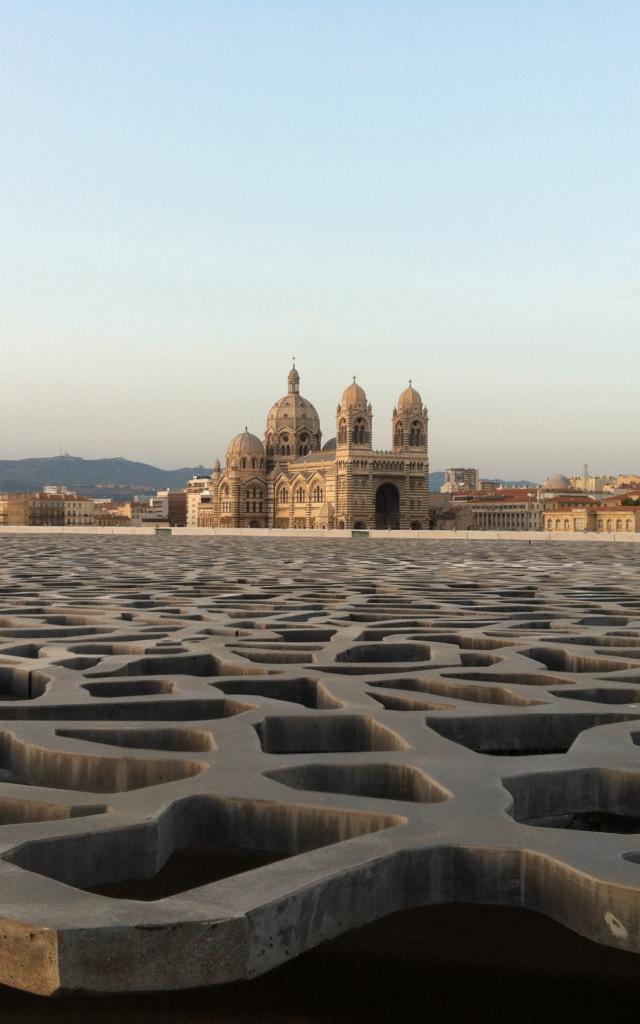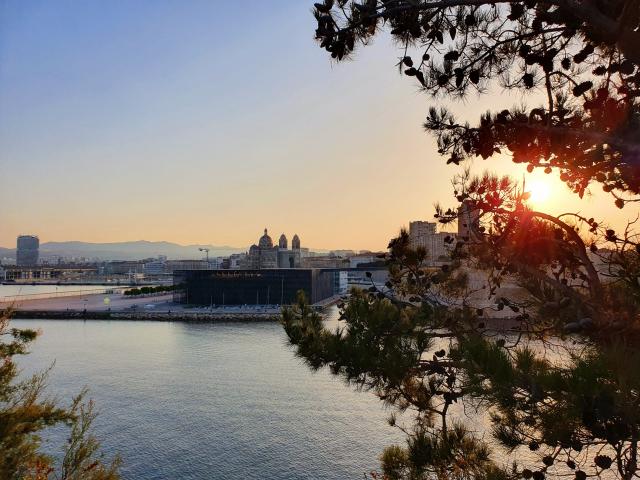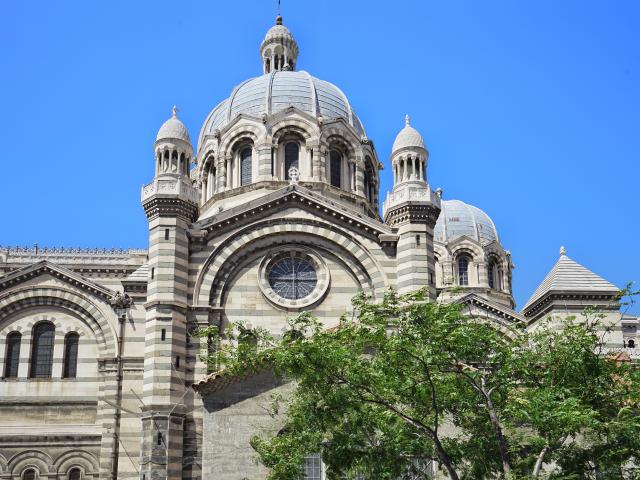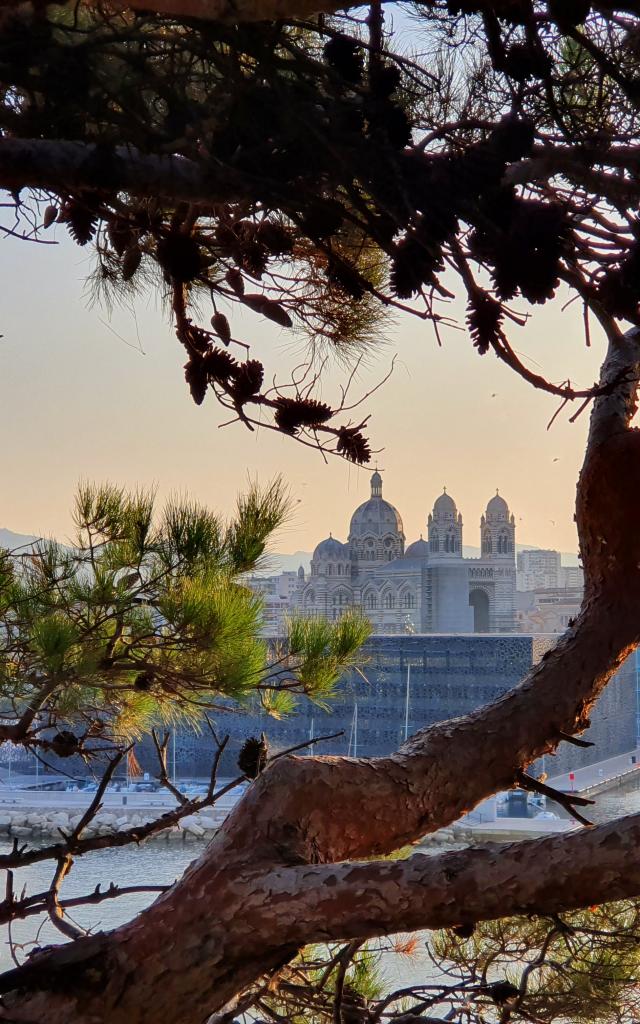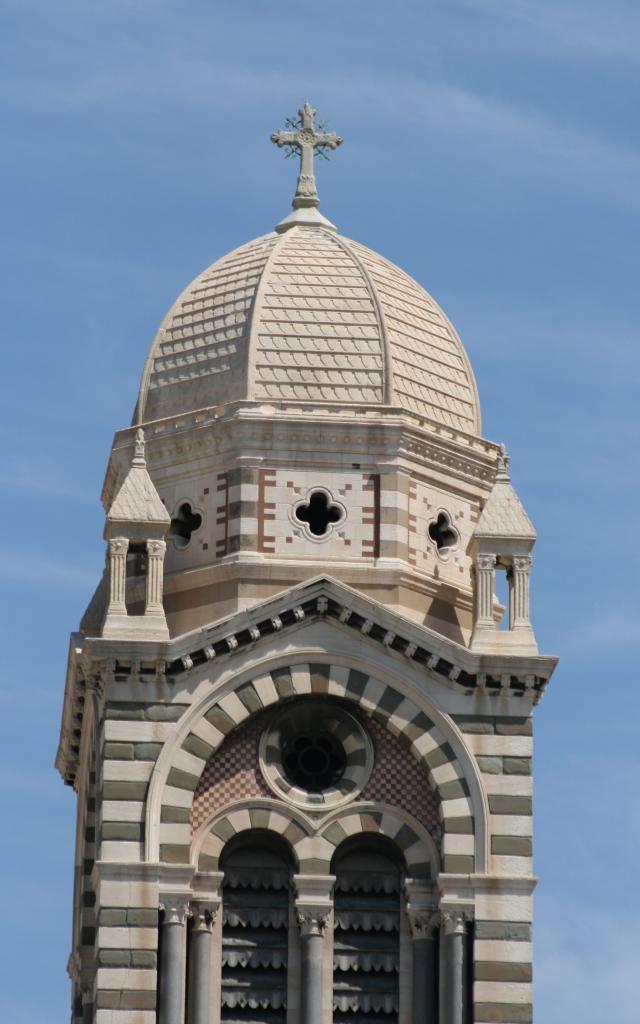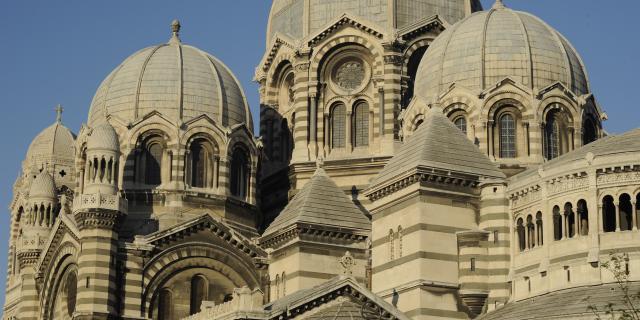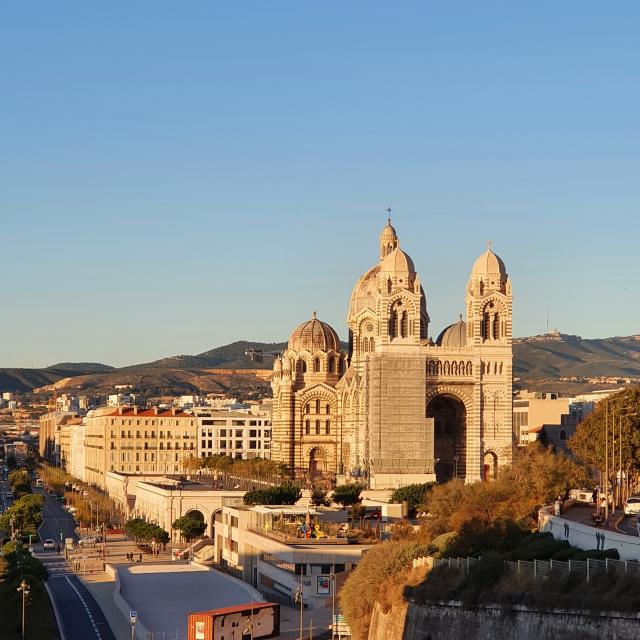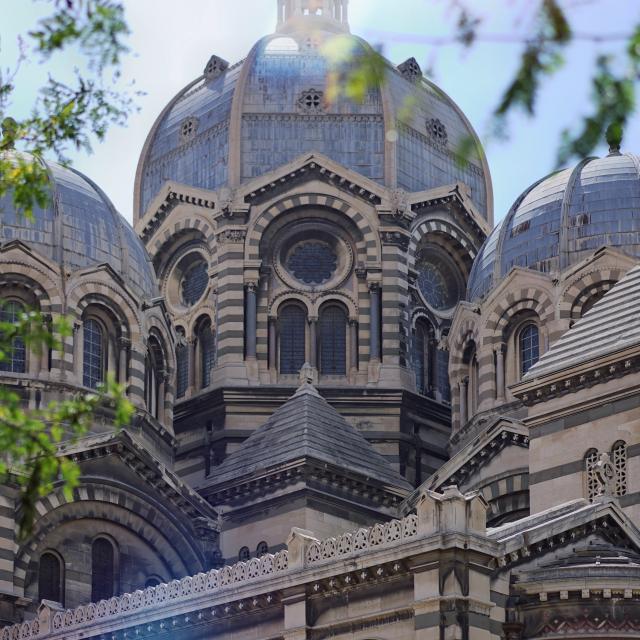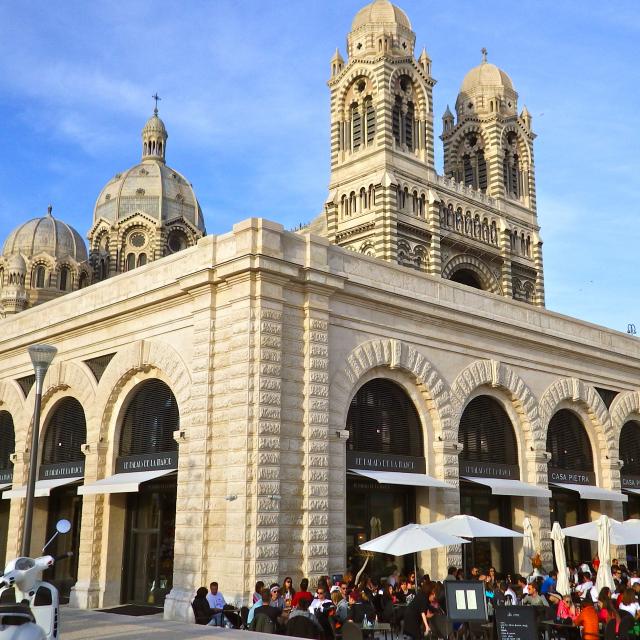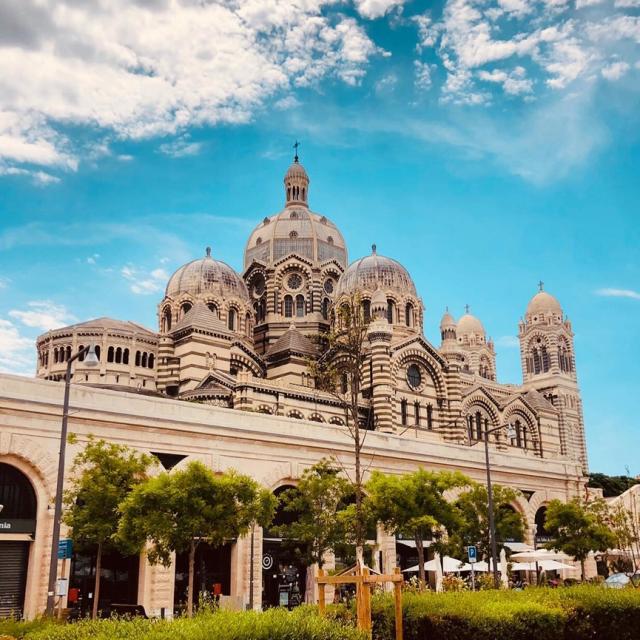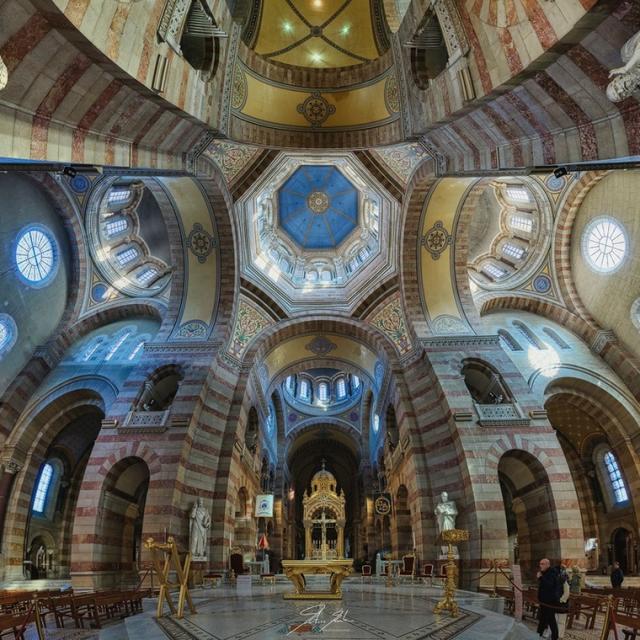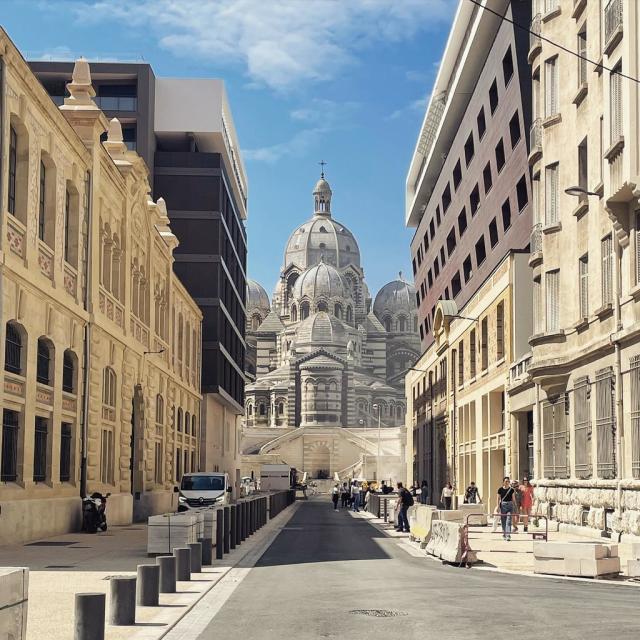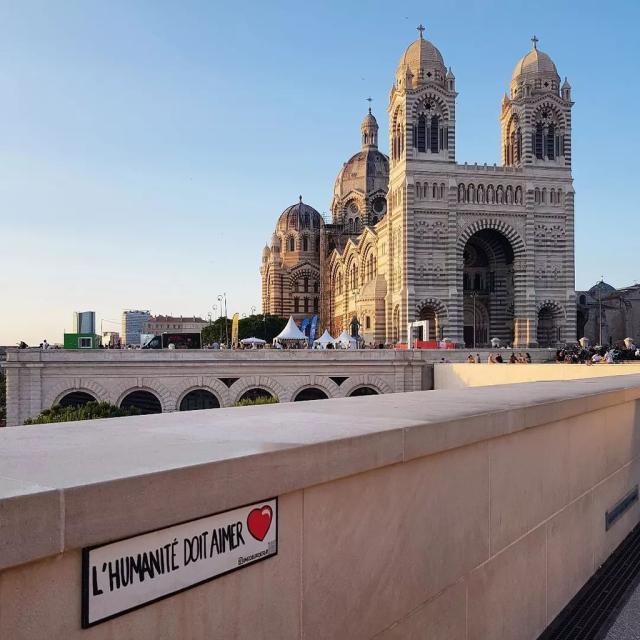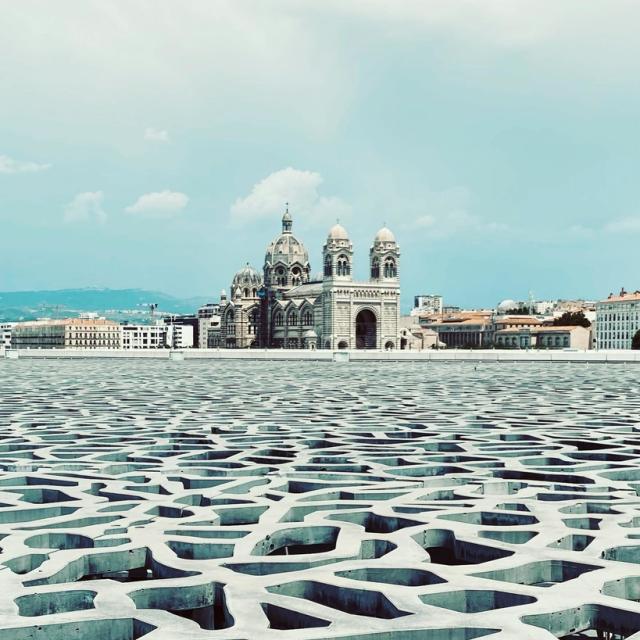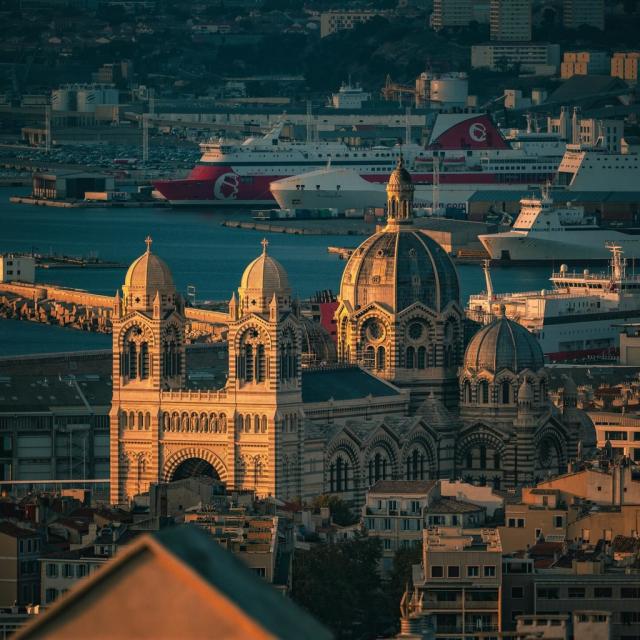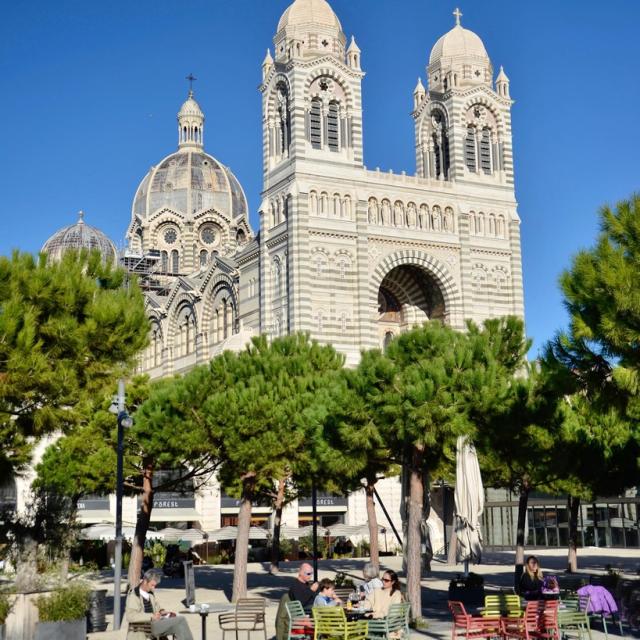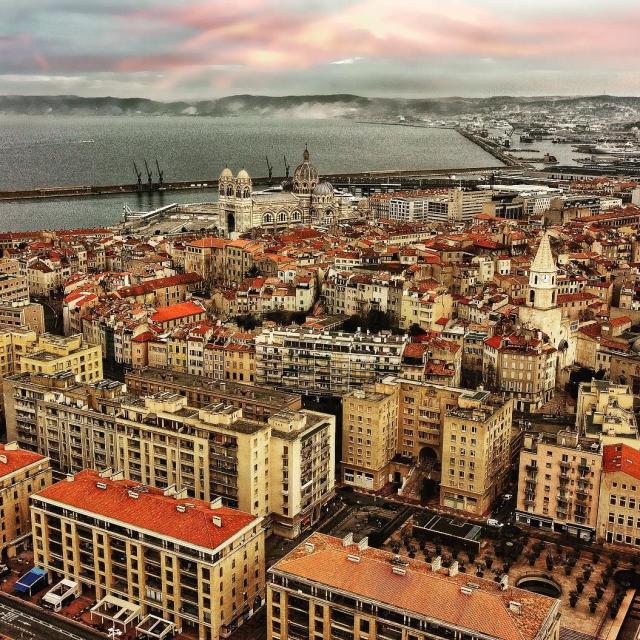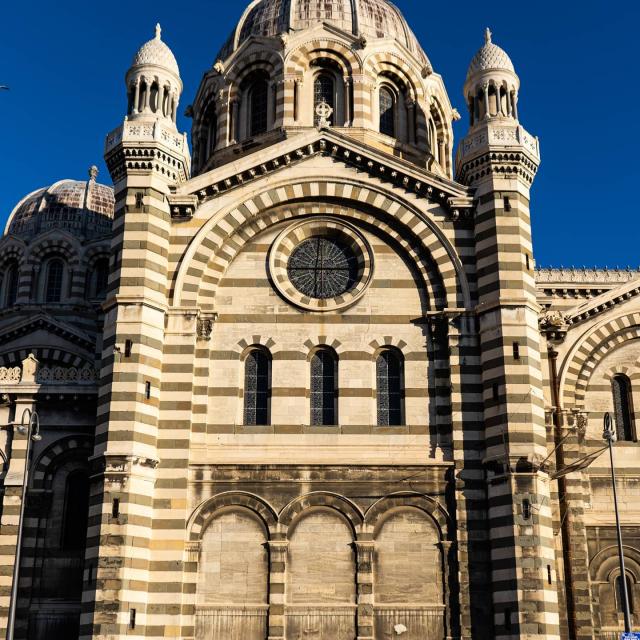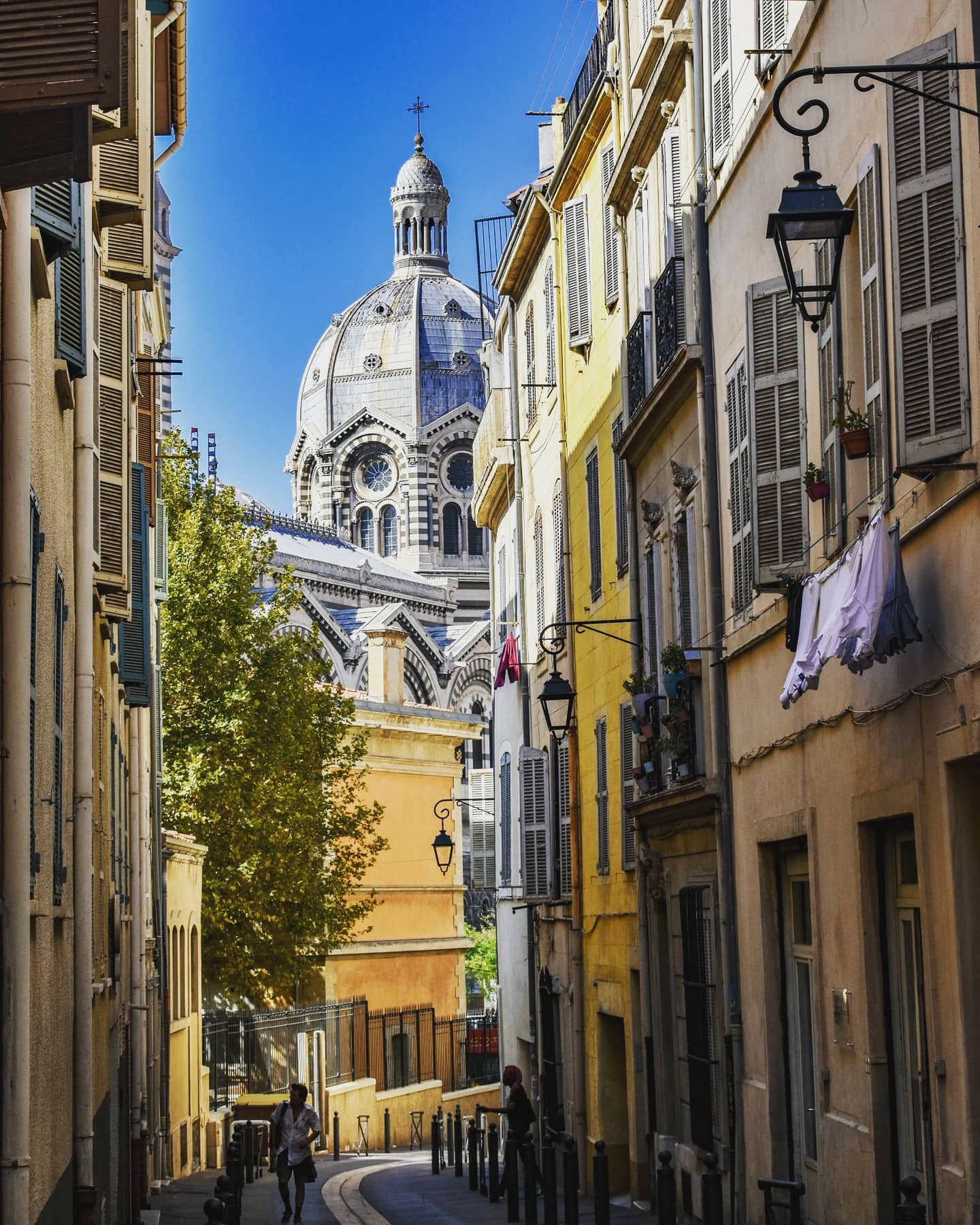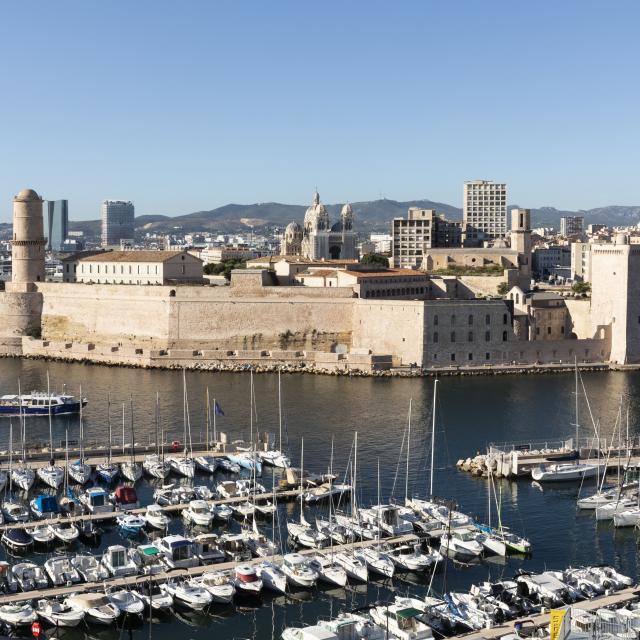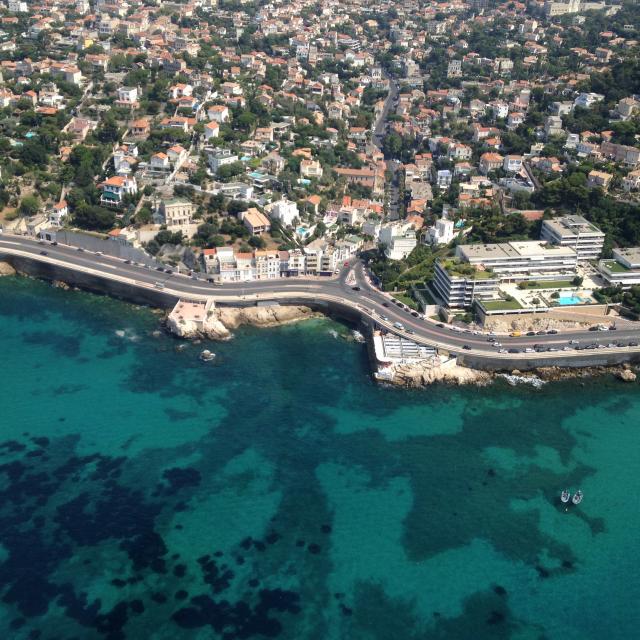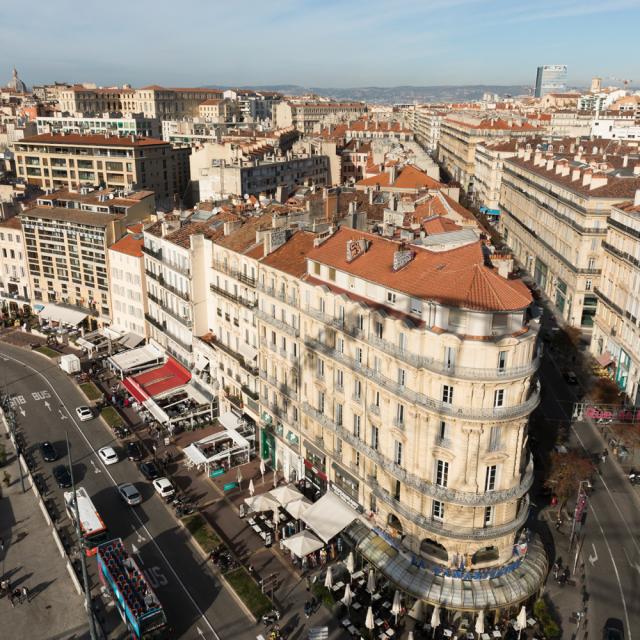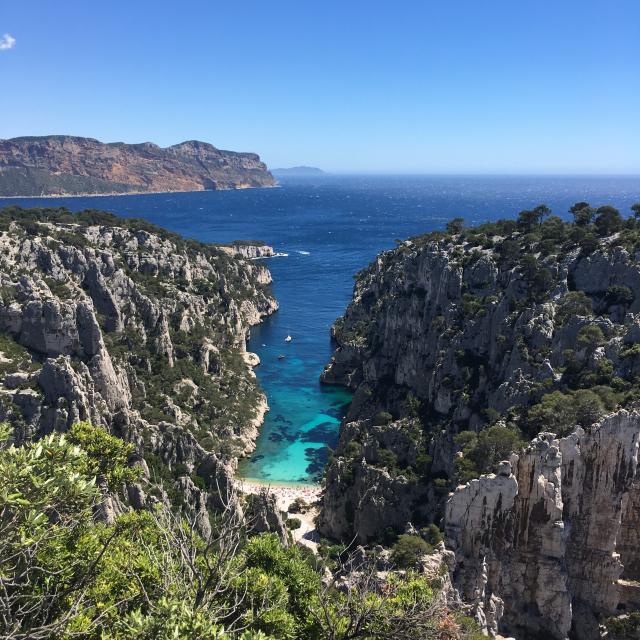The history of ‘La Major’
Also known as the Cathedral of Sainte-Marie-Majeure, or “La Major” by the people of Marseille, La Major is the only cathedral built in the 19th century. No cathedral had been built for 200 years! The construction of the cathedral was therefore just as innovative as that of a railway station, for example.
At the dawn of the 19th century, Marseille shines. The city experienced very strong economic and demographic growth, and to cope with the explosion in trade, Marseille was adorned with industrial buildings and infractrustures.
The choice of location for the Cathedral was well thought out: near the new commercial port, moved from the ‘Vieux-Port’ to ‘La Joliette’. It is indeed here, at ‘La Joliette’, that ships arriving from all over the world would see from afar the power beauty of Marseille. And this is the image they will take with them…
The first stone of ‘La Major’ was laid on September 26, 1852 by Louis-Napoléon Bonaparte, on the plans of Léon Vaudoyer.
It is considered to be one of the largest cathedrals built in this country since the Middle Ages. Its dimensions, comparable to those of St Peter’s Basilica in Rome, were, according to the design of the time, be worthy of the importance of the second largest city and the first port in France, and allow it to welcome 3,000 people.
Léon Vaudoyer died in 1872, so the construction of La Major was taken over by the architect Jacques Henri Espérandieu, who was in charge of the Notre-Dame de la Garde site and was a student and collaborator of the first architect.
Until his death in 1874, he was responsible for the installation of the frameworks and the construction of the domes. In 1874, Henri Antoine Révoil was the new architect of the Cathedral. Mosaic, sculpture, bronze… He was mainly responsible for the interior decoration of the Major.
It was a little over forty years later, on November 30, 1893, that the Cathedral of Sainte-Marie-Majeure was completed. It was handed over th Monsignor Jean-Louis Robert shortly afterwards. It was erected as a minor basilica on January 24, 1896 by Pope Léon XIII, and was consecrated on May 6, 1897.
It was classified as a historical monument in 1906.
